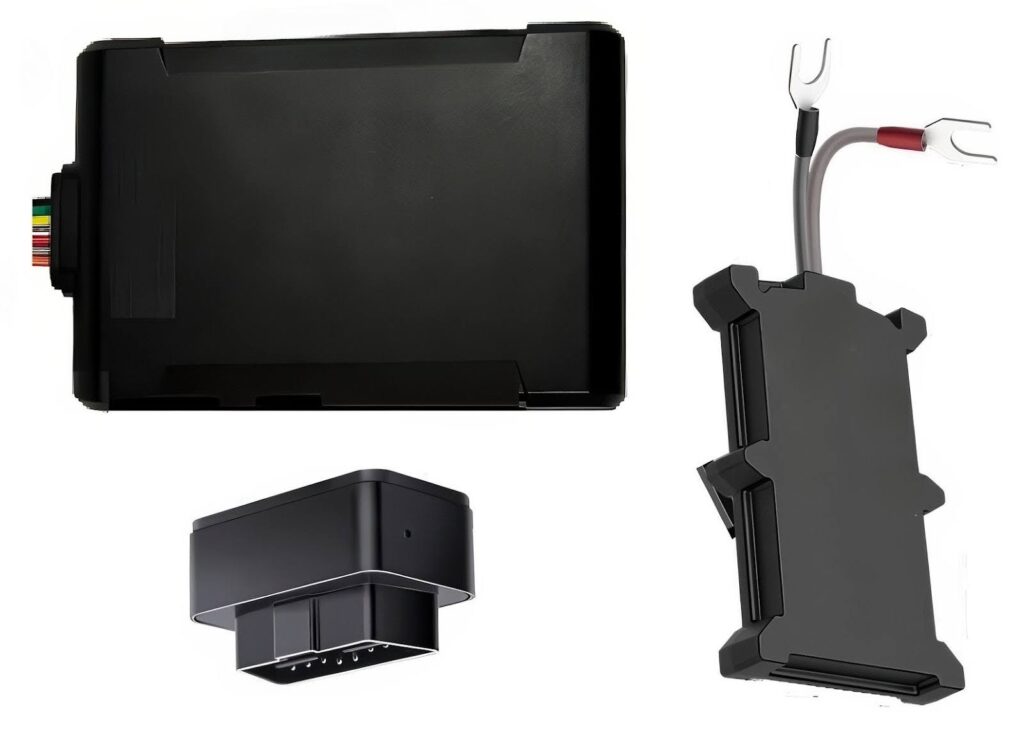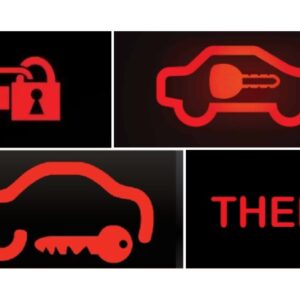
Most car trackers are rectangular or cylindrical devices with LED lights. Rectangular ones look like small boxes, while cylindrical trackers resemble a battery or a thick pen.
That said, GPS car trackers can come in a range of shapes, but they’re typically around the size of a bar of soap or a small TV remote.
These trackers are different from built-in trackers in many modern cars. The extent and purpose of these GPS tracking systems can vary widely depending on the manufacturer and model. Most modern infotainment systems include built-in GPS for real-time navigation and traffic. Systems like GM’s OnStar or Toyota’s Safety Connect can help locate stolen vehicles.
In case of a crash, some systems automatically send your location to first responders. Apps like FordPass, Tesla, or BMW Connected let owners check location, lock/unlock doors, and more.
Meanwhile, aftermarket vehicle trackers are compact devices that use GPS and cellular technology to monitor a car’s location and movement, whether for theft protection, fleet management, or personal peace of mind.
Depending on the type, some GPS trackers are hardwired and powered by the vehicle’s electrical system, while some are also connected to the OBD-II system via wires.
GPS trackers are easy to hide, making them ideal for surveillance. Some can stick to surfaces using strong magnets and are battery-powered, so they have no protruding wires. Car trackers can also come in the form of a device like an Apple Air Tag or a Tracki, which are small, poker chip-shaped devices that can be taped onto vehicles. Good hiding spots include the vehicle’s undercarriage and wheel well.
GPS trackers can track the location of the vehicle it’s on using GPS satellite tracking and cellular technology. They’re typically used in rental services to track vehicle fleets and monitor routing, driver behavior, and authorized use.
That said, this tracker can also be used for nefarious purposes. Understanding what a GPS tracker looks like can help you keep on the lookout if there are any attached to your vehicle.
Any information provided on this Website is for informational purposes only and is not intended to replace consultation with a professional mechanic. The accuracy and timeliness of the information may change from the time of publication.































